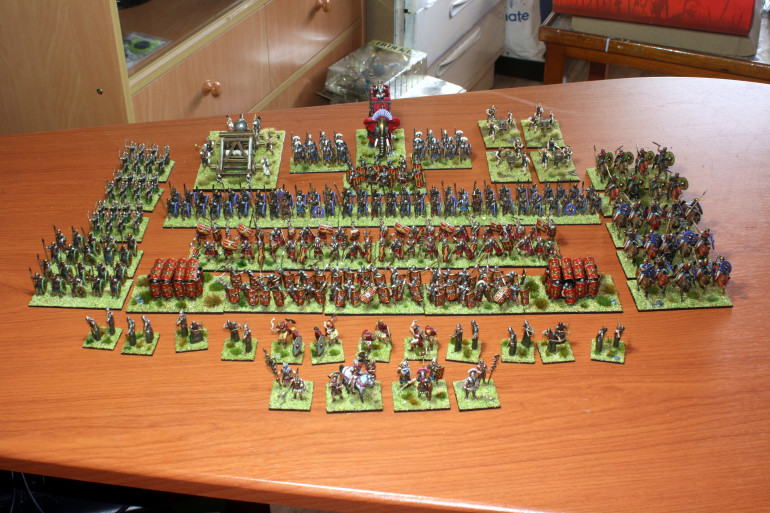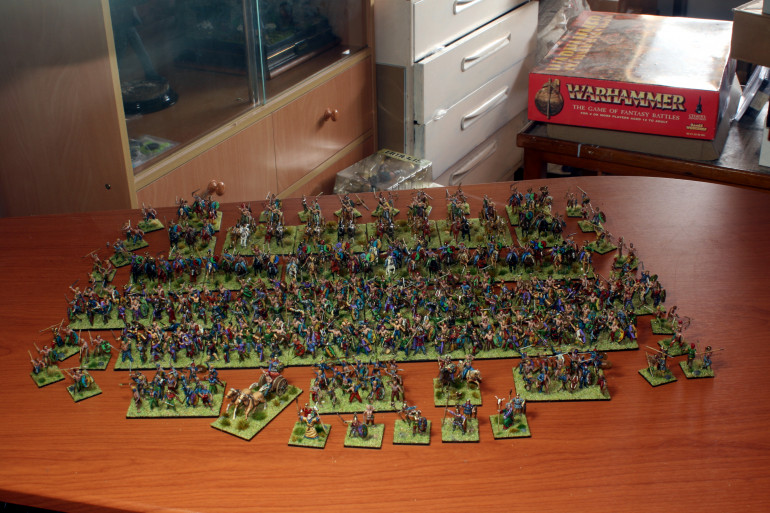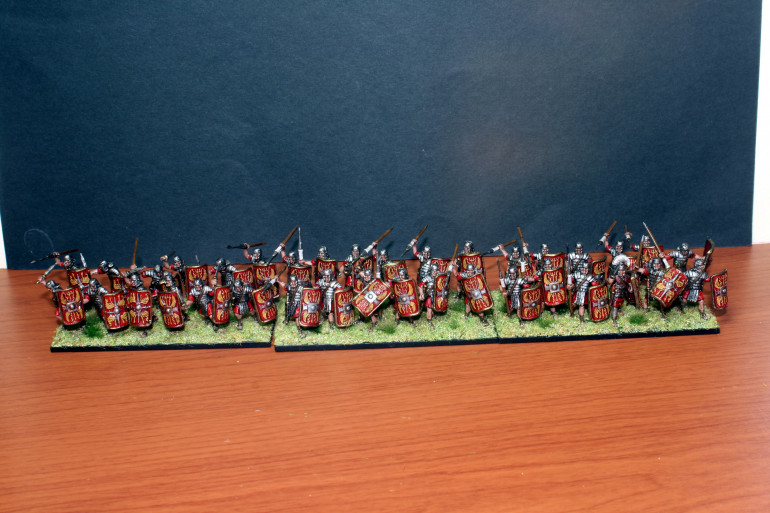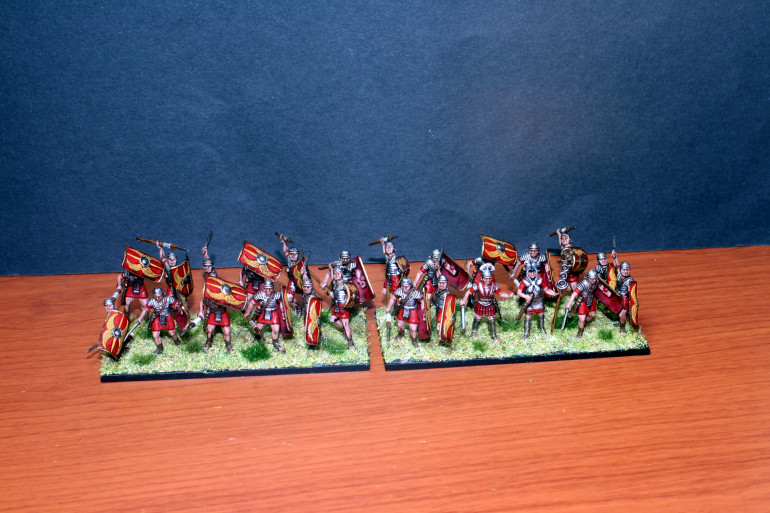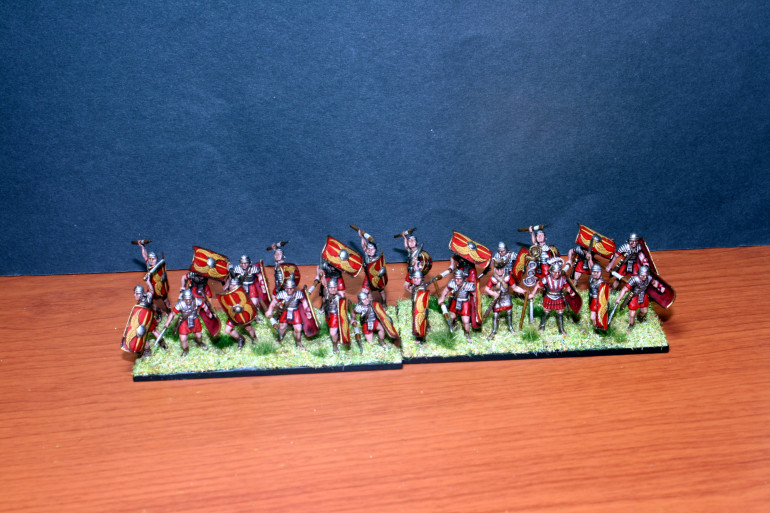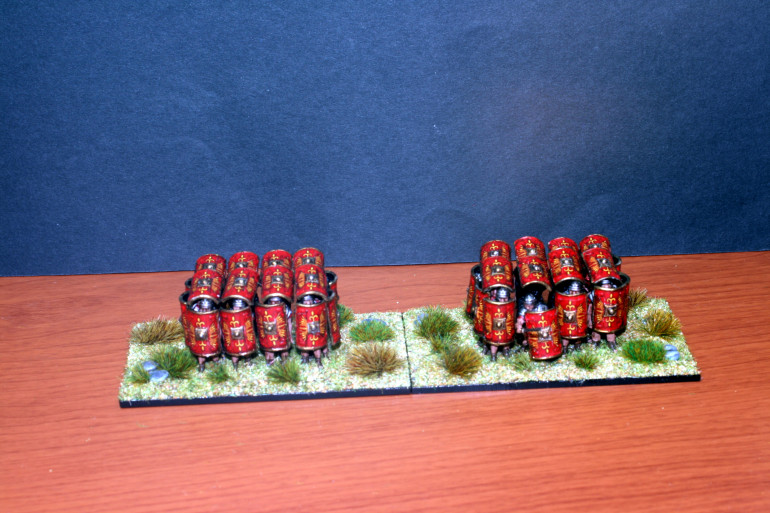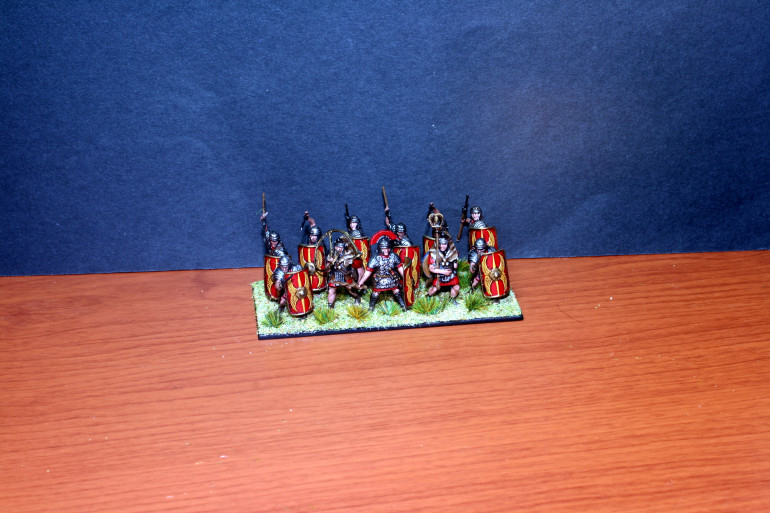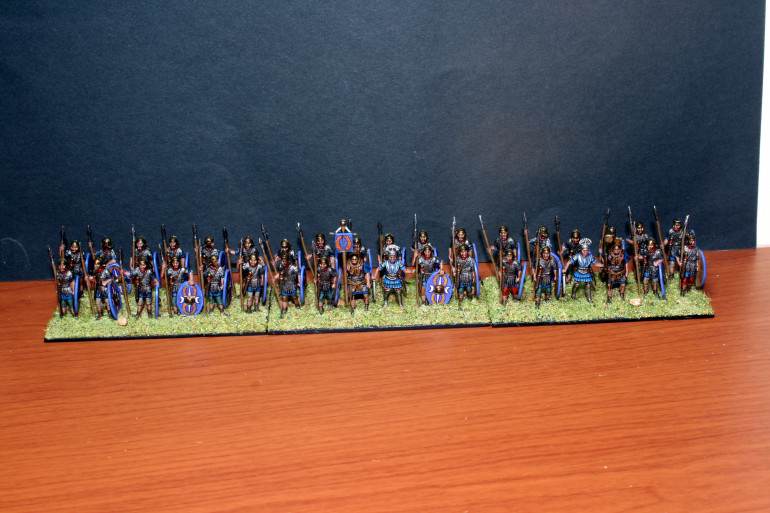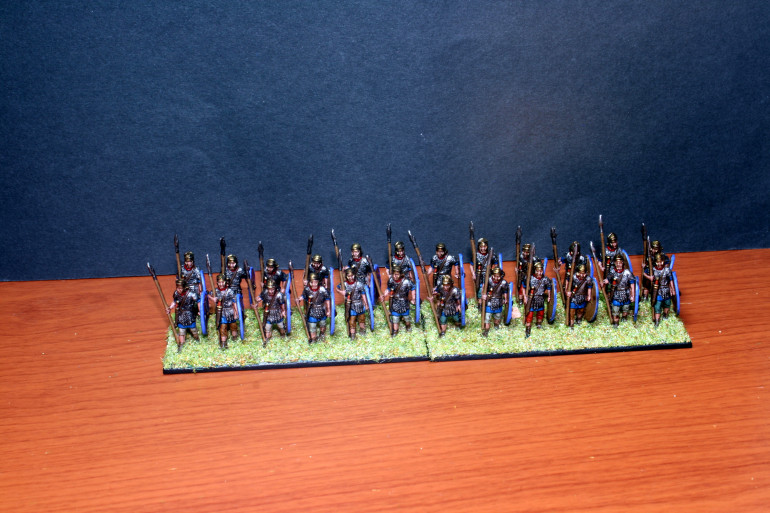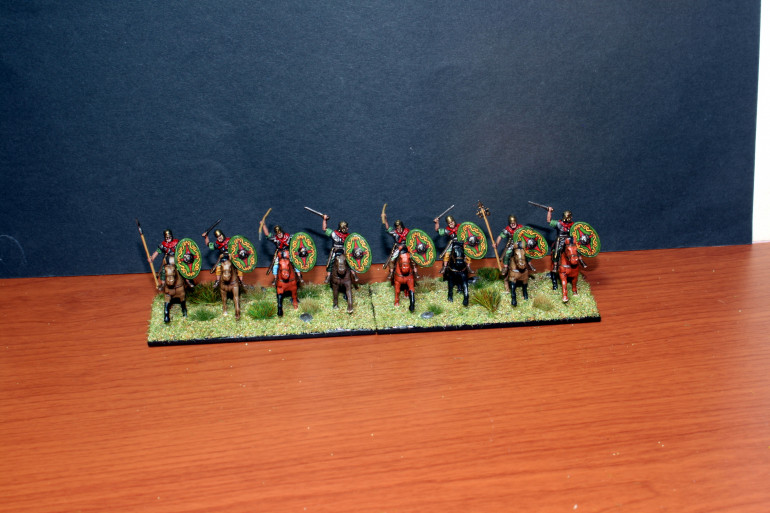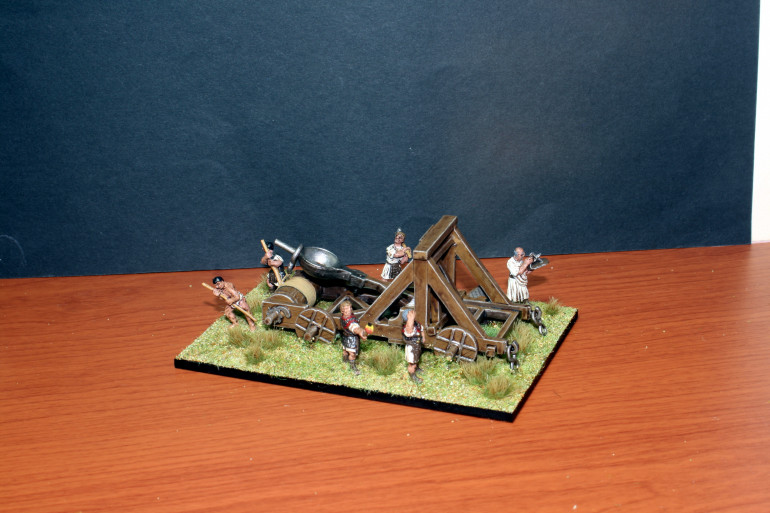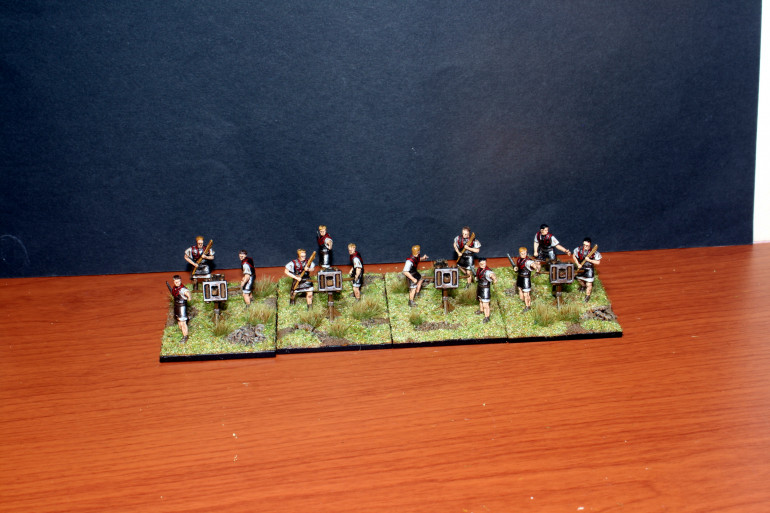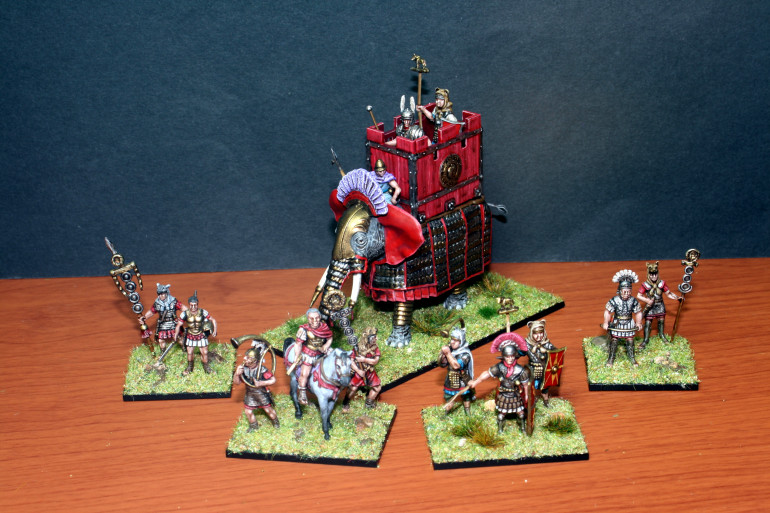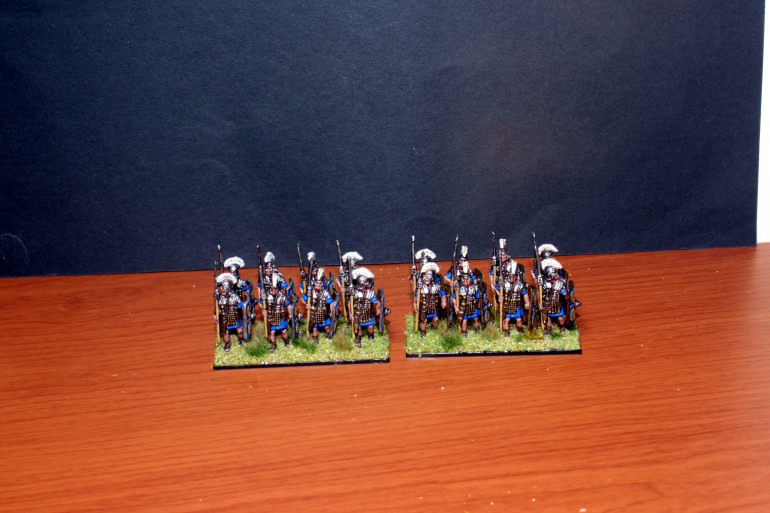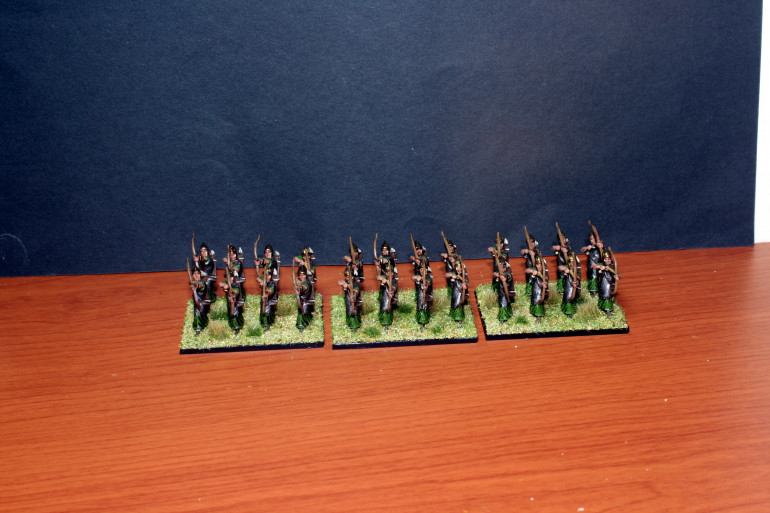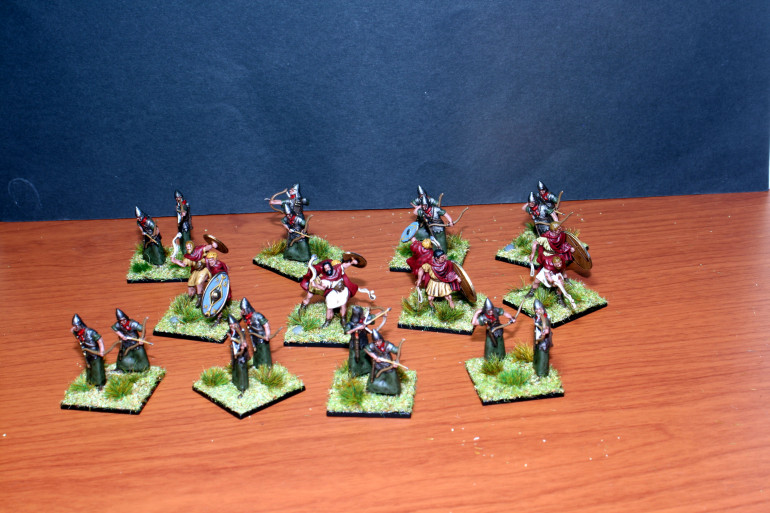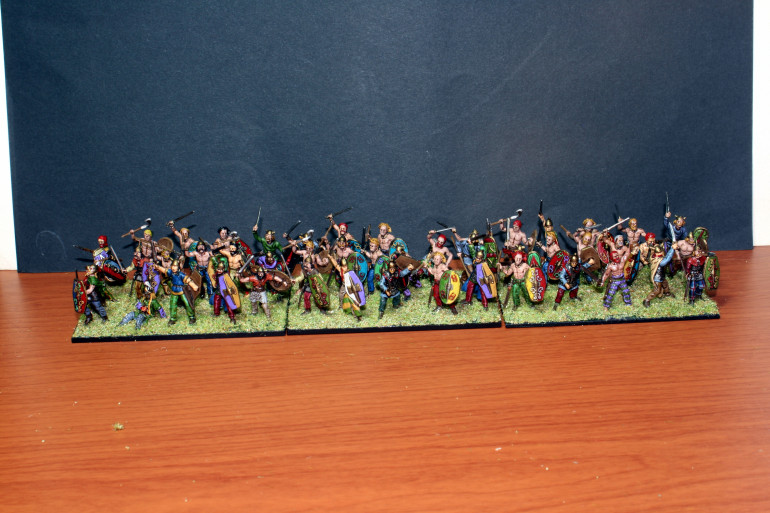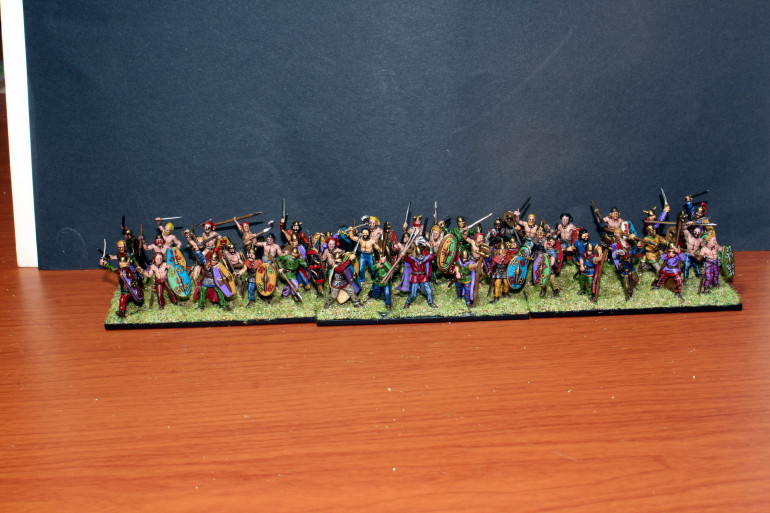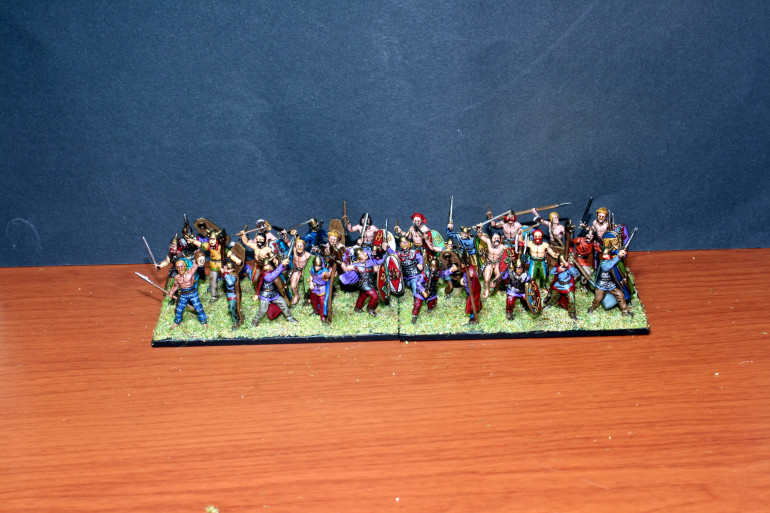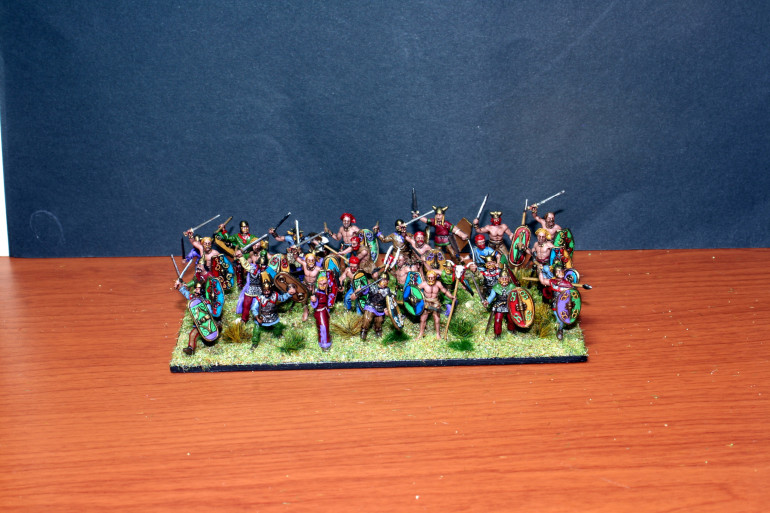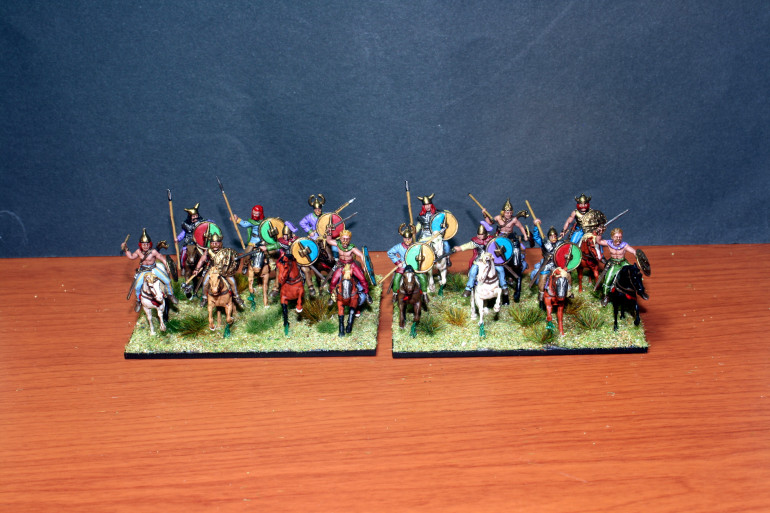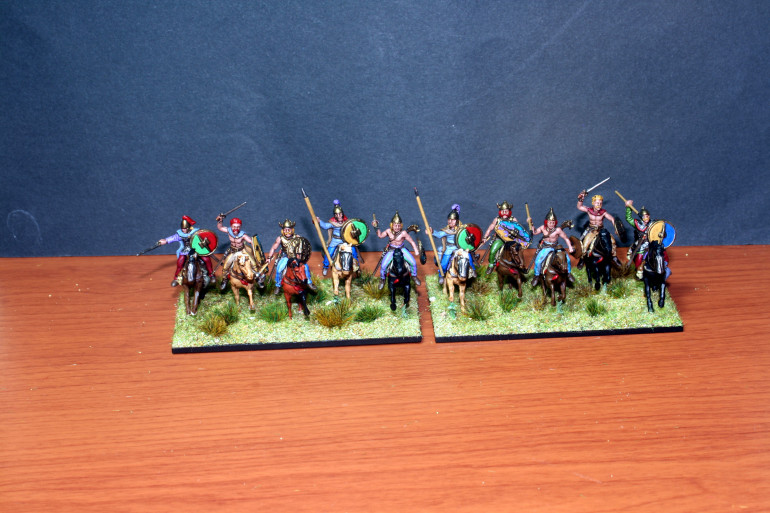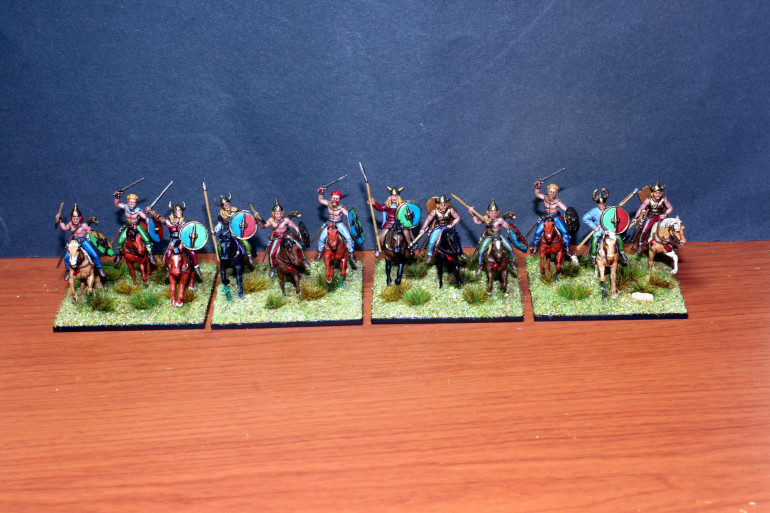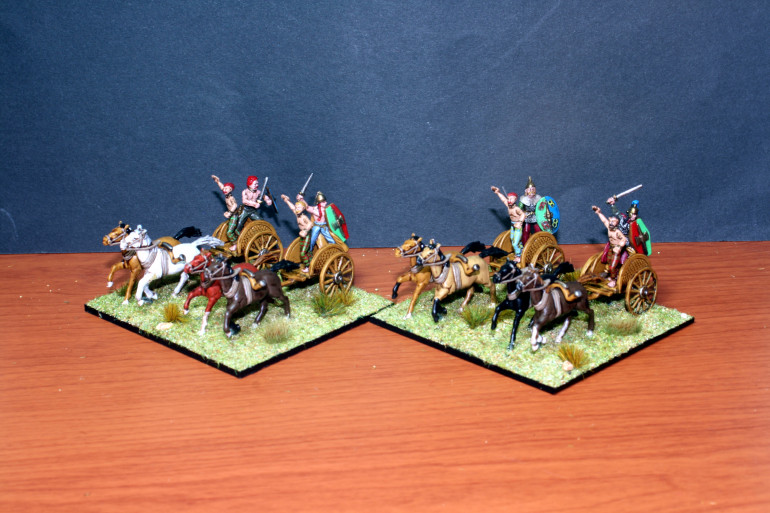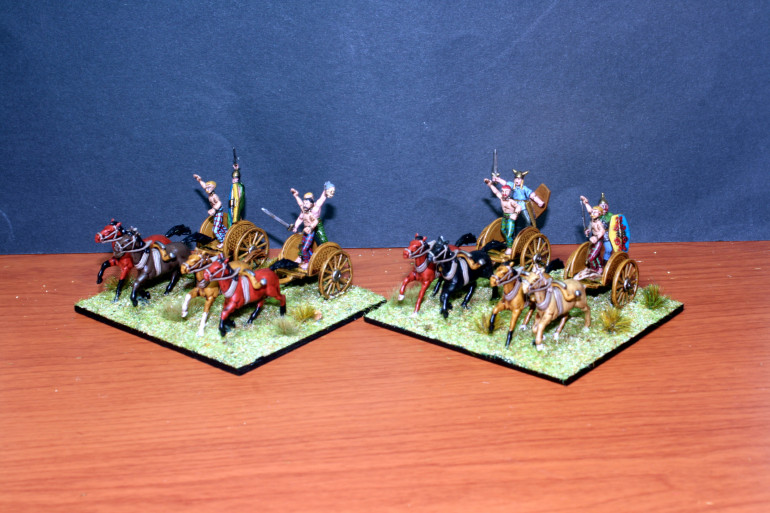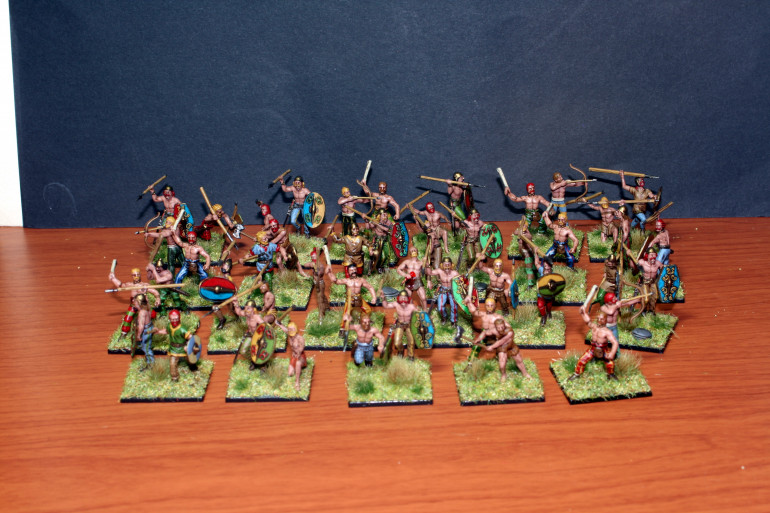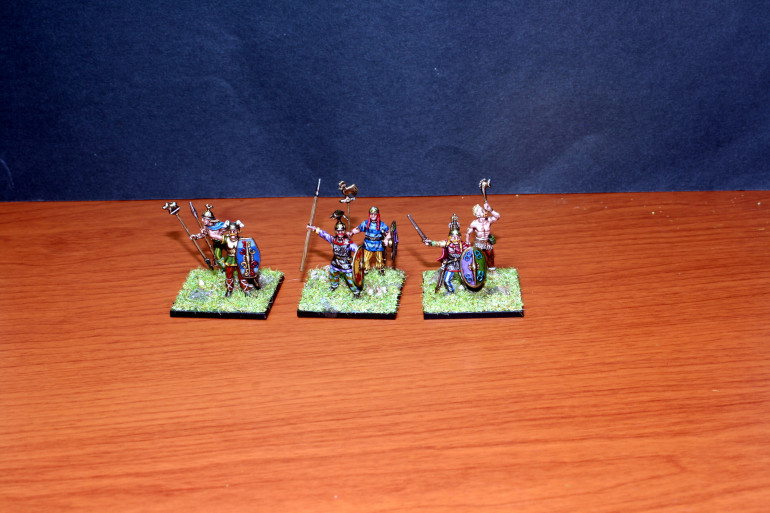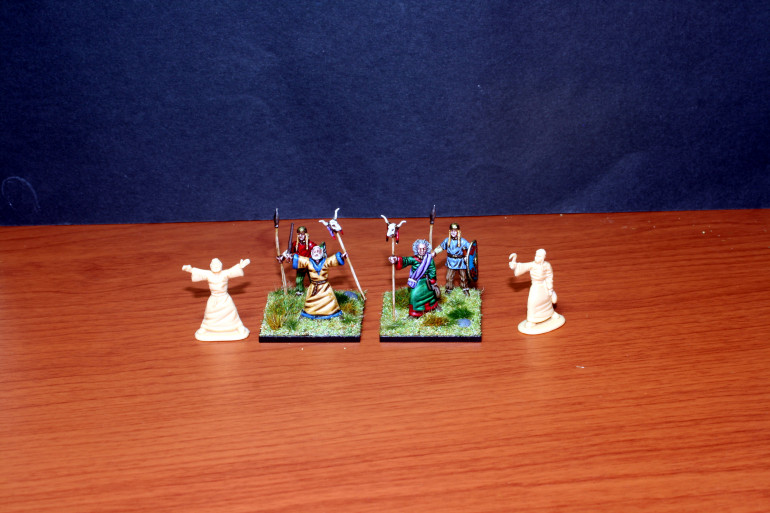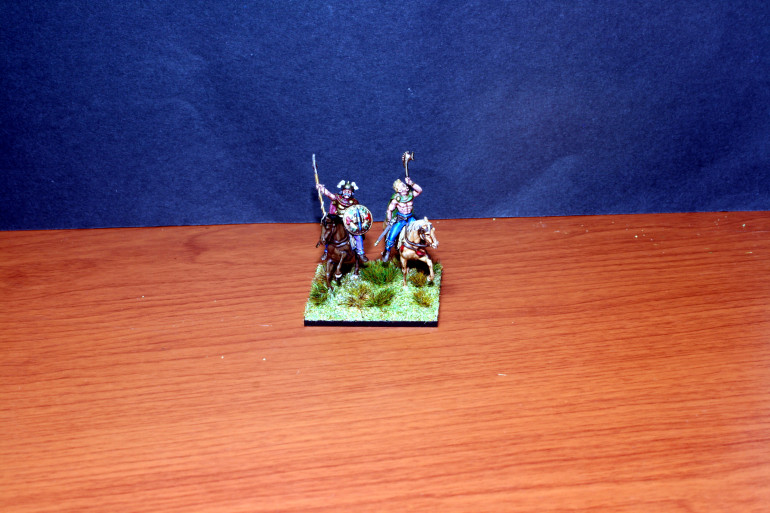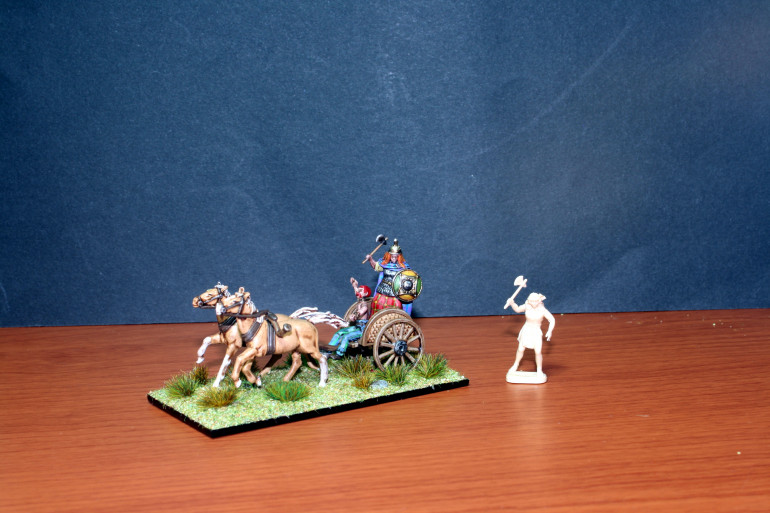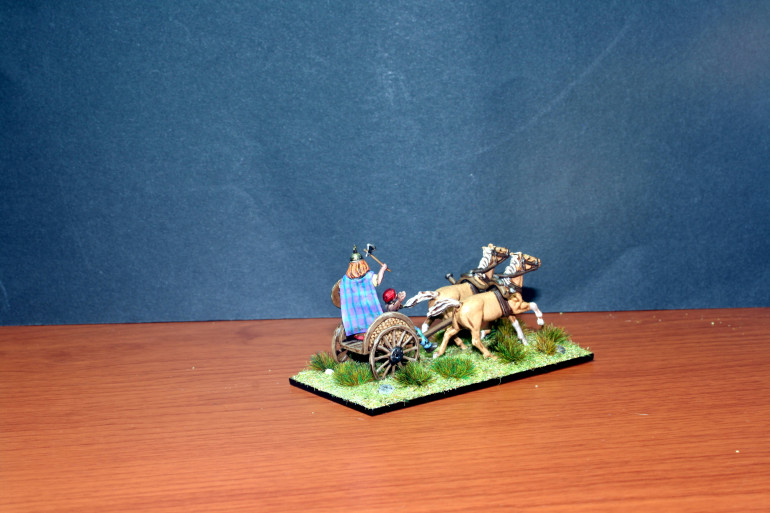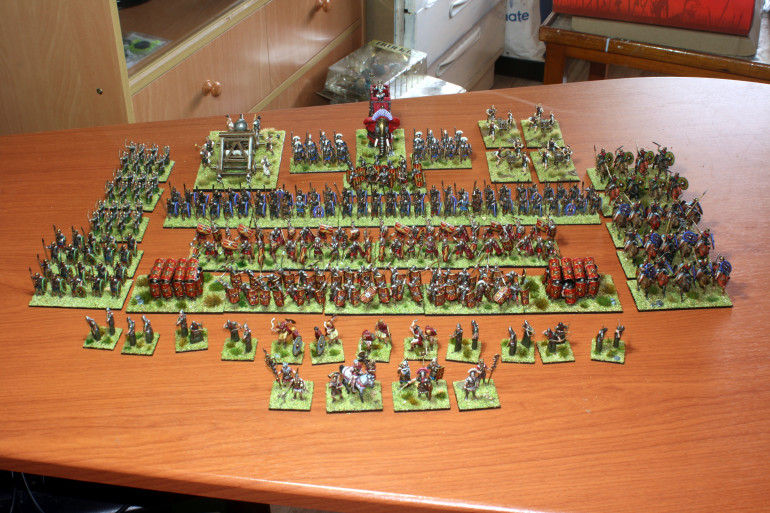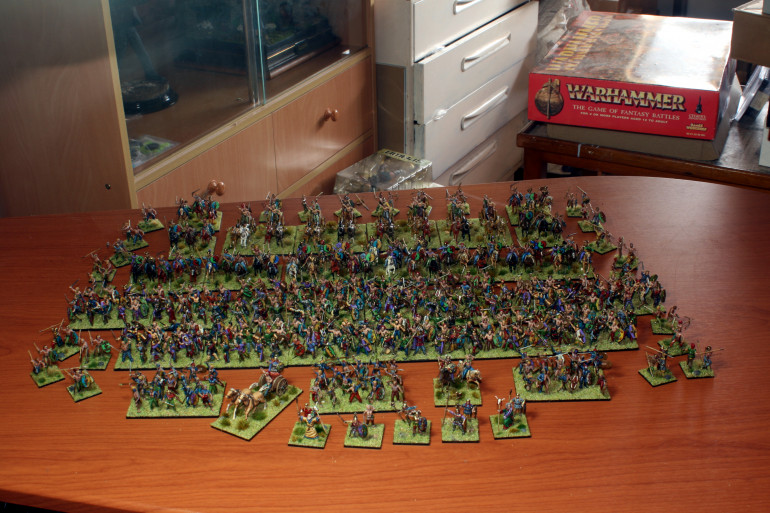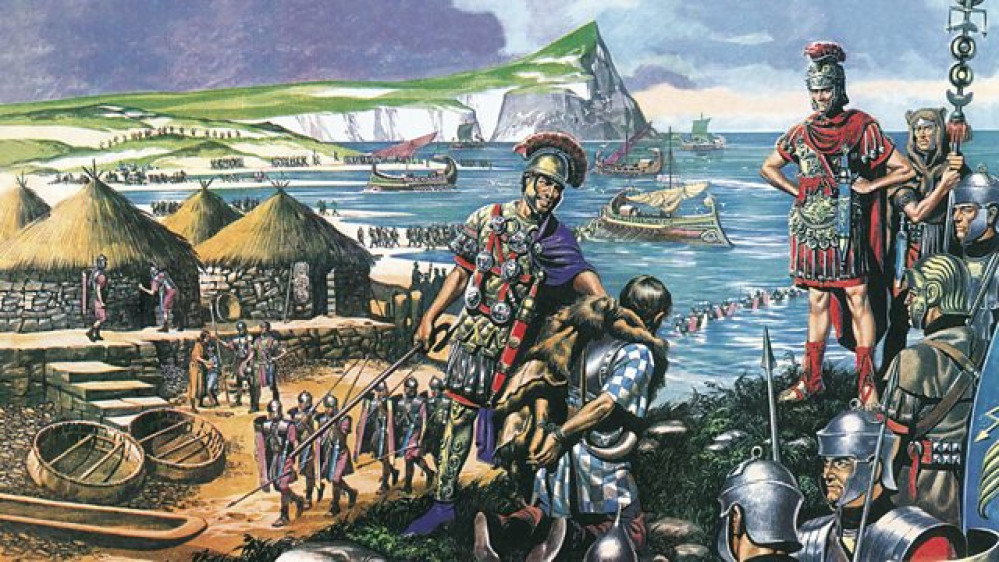
A Year and 7 Months! A 1/172 ancients project.
Recommendations: 58
About the Project
This was a project for Hail Caesar that lasted a year and seven months, specifically for the Britannia supplement. I painted nearly everyday for about an hour come sunshine or rain until it was finished. The miniatures are a selection of 1/72 plastics from several companies.
Related Genre: Historical
This Project is Completed
How it began.
Three years ago and 4 days, during a Black Friday Sale, I stumbled upon several lots of Italeri Romans and Celts for sale at a hefty discount. At the time, I had my eye on Warlord’s Britannia Supplement for Hail Caesar, which was also on sale.
The Roman invasion of Britain is one of my favorite periods for war-gaming, so I took the dive and bought the miniature lots and the supplement. As the title of the project suggests, I did not start this project straight away, since I was busy painting up my Vikings for Saga and my 10mm elves.
Going through the supplement, I quickly understood that I would need more figures to play out the scenarios as printed, so I calculated how many of each unit I would need and continued to buy accordingly for another few months.
As regards the actual painting, I decided that these two armies were solely for war-gaming purposes, therefore the painting was to be totally practical. I would focus on base colors painted in neatly, followed by a wash of Agrax Earthshade and a coat of varish – full stop.
I think it worked well enough for a basic tabletop standard, but I will let the readers decide that.
The end results are in the pictures below.
The Problem with 1/72 Miniatures.
The mistake I made with the Romans was to buy miniatures from different companies, although at times this was inevitable.
If I could go back in time, I would only buy Roman legionaries from just one manufacturer – probably Caesar Miniatures (because I like them the best).
Why is this? Well the problem is dual fold; that is of style and size (within the 1/72 scale). As you will see in the photos below, the difference in the above qualities can be significant.
Stylistically, Romans differ from company to company! But are they not all Romans in the same armour type from the same period?, you might ask? Well, yes, nonetheless they are or can be very different and to an extent ruin the uniformity of the army.
The same can be said with the Roman Auxiliaries, but in this case I had learnt my lesson and after thorough scrutiny of the miniatures on a site called ‘Plastic Soldier Review’ (a site that specializes in 1/72 plastic miniatures), I only bought auxiliaries from one brand – Strelets.
Size can be an even greater hurdle! For some strange reason, size differs not only from manufacturer to manufacturer, but also within the same range in the manufacturer’s miniature line!
Even more frustrating is that a manufacturer might have their Romans at one size, but their Celts at a slightly different size. It can literally drive one bonkers!
This problem in not such a big deal with the Celts, as they are more individual warriors rather than regimental soldiers. Therefore you can get away with murder and have different styles and sizes in the same unit without the unit looking weird or out of place.
That is all for this post. In the next post I will start posting pictures of the individual units.
Regards,
NR
The Legionaries
The first picture is of the Legionaries from Caesar Miniatures. They are by far my favorite, despite being slightly smaller by a millimeter to their Italeri equivalents. This might not seem like much but it does contrast unfavorably in the army. Regarding style, I think the Caesar Miniatures has the most ‘roman’ looking of all the brands. Also note that the three units were built from just one box!
The second group are from Italeri, and they are the ones I like the least! They seem to be wearing mini-skirts!, and this kind of puts me off. The problem was that I had bought them and painted them up before I bought the Ceasar Miniature legionaries, so I was stuck with them. The four units were built from two boxes.
The last set of legionaries were from Zvezda, who are probably the best manufacturer in the scale. Their Romans are visibly larger and don’t look convincing with the others.
These were a late buy as I wanted to include the Testudos. In order to make two I had to do a bit of conversion work, but I think they turned out OK in the end.
The extra legionaries, I put on a base on their own and will use them as veterans, as the campaign allows you to upgrade one legionary unit to a veteran as an option.
The Auxiliaries
The Auxiliaries are probably my favorite part of this army. They are all from Strelets and they are roughly the same size as the Italeri Romans and fit in well with the Zvezda miniatures, but are slightly taller than the Caesar miniatures. This is not so much of a problem historically , because auxiliaries were mostly of Germanic stock – so possibly bigger.
The campaign allows for medium units and light units. I went about this buy giving medium units 12 miniatures and light units of auxiliaries 10 miniatures. I also painted their shields differently to seal the deal.
The Auxiliary Cavalry
The auxiliary cavalry come in medium and light as well, within the Britannia campaign book. So for the medium cavalry I placed 5 miniatures and for the light I placed 4 miniatures.
I also went a step further with the cavalry. The medium cavalry are all from Italeri, but I had to convert all their heads since they were Republican Romans. I had a lot of extras, so this was not a problem.
The light infantry are from HaT Industries. They are of a slightly smaller size and less dynamic and rather flattish – which is a shame.
Like the infantry, I also painted their shields differently to further distinguish them.
The Artillery
The Britannia campaign book allows for two types of artillery – heavy and light.
The only heavy artillery I could find on the market was an onager by Strelets. Unfortunately, the model is not very accurate and the figures a bit gooey, but beggars cannot be choosers as my father once told me – so I guess I am stuck with it until something better comes along. ( As a side note, Strelets are not the best manufacturer out there, but since 2016 they have made great improvements).
I had the same problem with the light Scorpion artillery. The only viable option at the time was from HaT, so I went with them. I have to say though, they are not as bad as the Strelets onager. The Scorpion itself is good, but the figures could better.
The Characters
This was the part of the project I enjoyed doing most. In the campaign book, each scenario allows from two to three generals – so I decided to do several; most on foot and one mounted. These were all out of the box and no modifications were done.
Now to the elephant in the room – yes literally! There is an actually elephant allowed in the campaign. This represents the Emperor Claudius who is suggested to have gone over to Britannia to see how the conquest was going! Whether this is anywhere near accurate, I have sincere doubts – but I liked the idea and went with it. The model is from Zvezda, and is a Macedonian Successor elephant. I thought the archaic armor would match the impossibility of it being there – so there!
The campaign also allows Praetorian troops if you use Emperor Claudius – was I painted up two small units from Strelets.
A few more Auxiliaries
The last entry for my Roman army are a few more auxiliaries – namely archers and skirmishers.
The archers are from Zvezda and I was faced with a significant size problem since they seemed like giants! I got around this by literally cutting them down to size! I just hope it is not that obvious. There are 3 units on small bases as per campaign rules.
The other miniatures are all from HaT and are nice but not of the same standard as Italeri, Caesar or Zvezda in sculpting. I based them two to a 25mm base due to how Hail Caesar works as a game, but I can always put them on a sabot try for other systems like Impetus, Sword & Spear, or DBM.
More Tomorrow
That is all I can post for today, as I am limited a bit in time. Tomorrow I will post the Celts and bring this to a conclusion.
If you have any questions, please leave them in the comments and I will answer them tomorrow afternoon before I post the rest of the stuff.
Best regards,
NR
The Fanatics
The first units I painted up for the Celts were the fanatics. Unfortunately there are no dedicated sets for fanatics on the market. Therefore I went through all the sets I had and chose the most naked figures for these units. In fact, only the Italeri box had several of the same model completely naked.
To further distinguish these models from the rest of the warbands, I decorated them heavily with warpaint. I think they call it wode, but I am not sure.
Unlike the Romans, these units contain 16 figures on a 8cm x 5cm base, in order to represent their warband style of combat. The Roman legionnaires and auxiliaries were 12 figures on a 8cm x 4cm base.
Finally the figures are a mix of Italeri, Caesar and Revell miniatures. I also added some Italeri ancient German warriors into the mix to help distinguish them
The Warbands
The vast bulk of any ancient Celtic army are the warbands. The ‘Hail Caesar’ game is no exception.
Altogether I have ten units, more than enough to play every scenario in the Britannia campaign book. I made a few more simply because I had so many extra miniatures. Each box comes with 30 to 50 figures, so you are bound to have a surplus.
The base size and number of figures per base are the same as the fanatics, minus the warpaint. The figures are also taken from the same brands.
I would like to point out that I chose these three brands because they were and still are the best quality available for anyone wanting to pursue ancients in 1/72 scale
Large Warbands
Large warbands are the same as standard sized warbands but simply larger! The campaign book allows a maximum of two, so I painted two up.
I do not follow the base sizes for small and large units as laid out in the ‘Hail Caesar’ rules. I use my own conventions. The large bases are 12cm x 6cm and small bases are 5cm x 4cm. As long as both sides keep to these conventions there should not be any problem. ‘Hail Caesar’ is very flexible in this regard.
The Celt Cavalry
The ancient Britons did not have access to as many cavalry units as the Celts on the mainland, especially during Caesar’s wars in Gaul. Nonetheless, the units I could use I painted up.
The campaign book allows me to field a total of 2 medium cavalry units, 4 light cavalry units and 4 small cavalry units. The major difference between these unit types are mostly the amount of figures per unit and naturally their role on the battlefield.
To represent this, I placed 7 figures on medium cavalry units, 5 figures on light cavalry units and 3 figures on small cavalry units.
The figures are exclusively from Italeri and HaT, with several head swaps for a bid of variation.
The Chariots
No Celtic army can be complete without chariots. At least that is how I see it! Unfortunately the only celtic chariots on the market were those from HaT, which are not bad, but the plastic used is very soft and fiddly.
The figures are also all the same, but to be fair this is something that one will see throughout the 1/72 ranges. To be honest, all it took was a quick figure swap, but I had to leave the same driver on each chariot.
The chariots were small enough to put two on each base, and since the campaign allows for 4 units I needed 8 chariots. Fortunately enough, each box comes with 3 chariots each. The ninth I used for Boudicca.
The Celtic Skirmishers
The skirmishers are basically identical to warriors, the sole difference is their basing, which is prescribed for ‘Hail Caesar’ and of course their role on the field of battle. They are also the same as Roman skirmishers.
Another difference is the amount the Celts can have – significantly more.
The Celtic Characters
Once again, the painting of these characters, along with the Roman ones was the best part of this project. Unlike the vast bulk of the army, I took the time to add a highlight and a lowlight to these models in order to help them stand out.
With these celtic characters, I also did some converting, especially with the Boudicca model.
The first batch of celtic generals were painted out-of-the-box, without any conversion work whatsoever.
The second batch of characters I worked on were the druids. I took some time to convert these miniatures from the basic models. I did this to make them more prominent, and because I used the basic models in the large warband units below.
The models were converted by cutting parts from other miniatures as well as basic sculpting work with duro putty.
These are HaT models. No other range has druids! I find this very strange.
Since I have a substantial celtic cavalry wing with this campaign, I wanted one of my generals to be mounted. This does not make any difference in game terms, but it is visually more compelling.
Both the figures in the photo below are conversions. They are basically four figures cut at the waist, switched and glued on. I also added cloaks to the models to differentiate them from their infantry counterparts.
The last general, but certainly not the least is Boudicca, Queen of the Iceni. She is one of several named characters, but the only one that really needs a dedicated miniature.
The problem I had was that all the Celtic box sets I owned had no women in them. I did find a female model in the Italeri Ancient German box set. The model is in the photo below.
I began converting this figure with putty and from parts from other models. I sculpted it from the body out, with the helmet, shield and hair the last parts to be added.
I also had to convert the rider. The rider was originally standing, and this detracted from the Boudicca model. Putting him in a sitting position was a fiddlier prospect than Boudicca herself, but I managed in the end.
The Last Entry
(This is a copy of the first entry)
Three years ago and 4 days, during a Black Friday Sale, I stumbled upon several lots of Italeri Romans and Celts for sale at a hefty discount. At the time, I had my eye on Warlord’s Britannia Supplement for Hail Caesar, which was also on sale.
The Roman invasion of Britain is one of my favorite periods for war-gaming, so I took the dive and bought the miniature lots and the supplement. As the title of the project suggests, I did not start this project straight away, since I was busy painting up my Vikings for Saga and my 10mm elves.
Going through the supplement, I quickly understood that I would need more figures to play out the scenarios as printed, so I calculated how many of each unit I would need and continued to buy accordingly for another few months.
As regards the actual painting, I decided that these two armies were solely for war-gaming purposes, therefore the painting was to be totally practical. I would focus on base colors painted in neatly, followed by a wash of Agrax Earthshade and a coat of varish – full stop.
I think it worked well enough for a basic tabletop standard, but I will let the readers decide that.
The end results are in the pictures below.









































